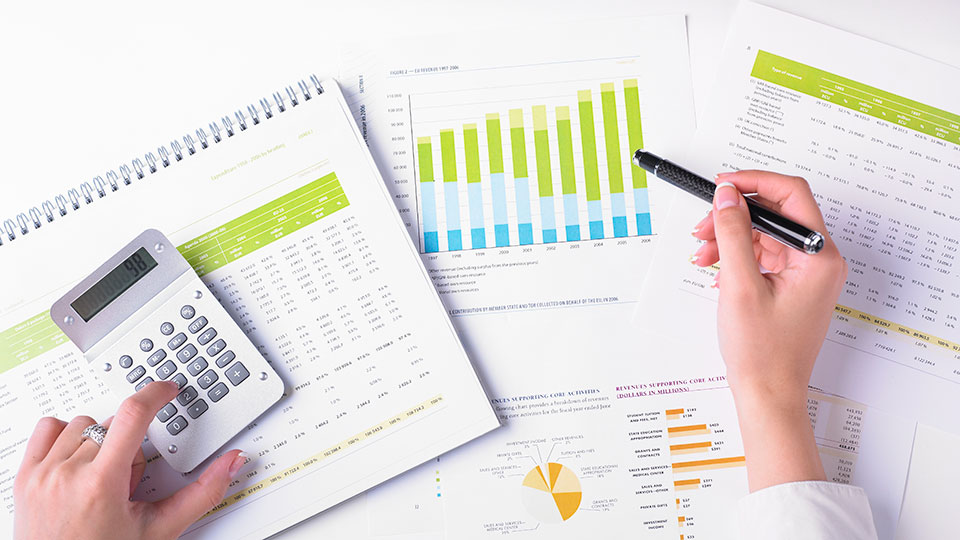Filtered By: Money
Money
How to beat the stock market for beginners

The stock market is a tricky beast. You never know when it’s going to go up, down or sideways.
Even the most seasoned analysts can only predict so much the volatility of stock prices scares a lot of people from investing because they don’t have time to spend analyzing companies and how particular stocks and the market in general would go. With the scrutiny required to make the most informed investing decisions, the prospect of investing in the stock market is just plain scary.
But what if there is a way for you to invest in the stock market in amounts you can afford and a schedule that works for you, at the same time entailing lower risk? Even if there are no guarantees, you can still mitigate the risks by taking the easy, beginner-friendly way to investing: peso-cost averaging.

What is peso-cost averaging?
Simply put peso cost averaging means you buy stocks or securities for a fixed amount of money each month or quarter over the medium- to long-term. This could be as low as P1,000 a month for three years, or as high P100,000 every quarter for five years. Your budget dictates the amount and time frame involved in your investment.
Because of the stock market’s volatile nature, investing within limits allows you to buy fewer shares when prices are high and more when prices are low. If shares in Company X are trading at P5 apiece in a particular month, you get 200 shares for your P1,000. When the prices go up the next month to, say, P10, you only get 100 shares. You keep at it for a specified timeframe, ideally at least five years. When you see that you’ve made quite a profit from your investment, you sell your shares and reap the rewards.
Let’s say you’ve decided invest a maximum of P5,000 a month on shares in Universal Robina Corporation, a stock that Wall Street Journal analysts believe will outperform the market in 2015.
For the sake of argument, let’s say you did this some two years ago on January 2, 2013.
The following chart shows you how much you would have actually spent in two years, based on peso-cost averaging, as well as the gains you’ll make:
(Historical values obtained from Yahoo! Finance and converted at the rate of $1 = P44.20, and may not actually correspond with the peso’s historical prices. Stocks are bought in multiples of 10 due to the PSE board lot rules, which determine the minimum amount of stocks you can purchase. Stock prices are adjusted closing prices from the first trading day of the month. For purposes of clarity costs like broker’s fees, transaction fees, and taxes are not included in this example.)
By simply sticking to the peso-cost averaging system for a blue-chip like URC you stand to gain over 60 percent from your investment after two years – or maybe even more if you stay invested longer in a good performer. Try to find a deposit account that can beat that.
Of course, nothing is for sure in the stock market so keep an eye on the trend of your chosen stock, and have a Plan B for when things go south. But if you pick blue-chip stocks, it’s much more likely, but not guaranteed, that you will come out with a healthy profit when you decide to sell after a few years.
What are the advantages of peso-cost averaging?
- You start with a small amount. What discourages beginners from investing is the false belief that you need hundreds of thousands to even get started. But you can start peso-cost averaging at the manageable amount of P5,000 a month. If you invest that amount in the stock market for a year, that’s P60,000.
- You invest at less cost and less risk. Because you’re spreading your investment over a specified timeframe, you diminish the risk of “investing a large amount in a single investment at the wrong time,” according to Investopedia. For beginning investors who don’t have the time or expertise to carefully study stocks, peso-cost averaging is a good solution. Instead of focusing on timing the market, which requires a lot of effort, you focus on accumulating assets. This method reduces your average cost per share and spreads your investment risk over time. In the process you tend to lessen the mistakes as well as the cost of making a bad decision.
- Even if the market is down at year-end you still come out ahead. Let’s say you have P100,000 and decided to invest all of it at once in a stock priced at P100 a share in January. But because of bad market conditions, the value of the stock went down to P90 a share by December. You lose 10 percent of your initial investment, and the market value of your shares is now down to P90,000.
What if you decide to go for the peso-cost average instead and invest P25,000 per quarter? Take a look at this scenario:
Even though the value of the stock went down by 10 percent by year’s end, the market value of your shares is actually up by 4.58 percent. Not bad at all.

What are the disadvantages of peso-cost averaging?
- You’ll have less profit than if you studied and analyzed the market. This method won’t make you a lot of money very quickly since it’s focused on averaging out your losses – and thus your gains – over a long period. But since you still invest and study the market, you’ll be learning as you go along – learning that prepares you for the fun of trading shares!
- You could pick the wrong stock and end up losing a lot of money. Cost-averaging does not insulate you entirely from loss. If you keep using peso-cost averaging on a stock on its way down, and it never recovers, you’re going to lose. But you reduce such likelihood by investing in stable, dividend-paying blue-chip stocks. “Apply cost-averaging on companies which have shown stable growth and performance over the past years to minimize your risks,” writes Fitz Villafuerte of the Ready to Be Rich blog in an email exchange with iMoney.
- Lump sum investments outperform cost averaging 66 percent of the time. This is true. But if you get the timing wrong, market volatility will have a more debilitating impact on lump sum investments. Such losses might scare you off and steer clear of investing for the rest of your life. Peso-cost averaging helps you go over the bumps of investing in stocks by giving you an investment plan that’s easy to follow.

How to do peso-cost averaging?
- Figure out how much you can afford to invest. It doesn’t matter if it’s P5,000 or P50,000 you can afford to invest per month. What’s important is you have to start somewhere. To maximize the benefits of peso-cost averaging you must be consistent with your monthly investments. As your income increases, you can raise your investible fund as well.
- Make a schedule for your investment. Will smaller monthly investments be more manageable for you, or would you prefer quarterly investments? Whatever you decide on, make sure you stick to it in the years to come.
- Choose the right investment.
The best investment products for peso-cost averaging are blue-chip stocks and pooled funds. “Particularly, equity and growth funds perform very well if you do cost averaging on them for many years,” according to Villafuerte.
Do not use peso-cost averaging when a stock is on its way down and has no bright and foreseeable future. If you do this, you run the risk of piling up losses.
- Stay true to your investment schedule for at least 3-5 years. Peso-cost averaging works best in the long-term. As long as you’re confident that the stock isn’t going down, don’t fret when you find that at one point in time you’re buying at a higher price than before. Keep in mind it’s a long-term play and stick to it.
With a bit of effort and a lot of discipline you can start investing right away with the peso-cost averaging method. All it takes is that first step!
Before you start peso-cost averaging, are you truly ready to invest? Find out with this checklist!
Tags: imoneytips, imoney
More Videos
Most Popular



